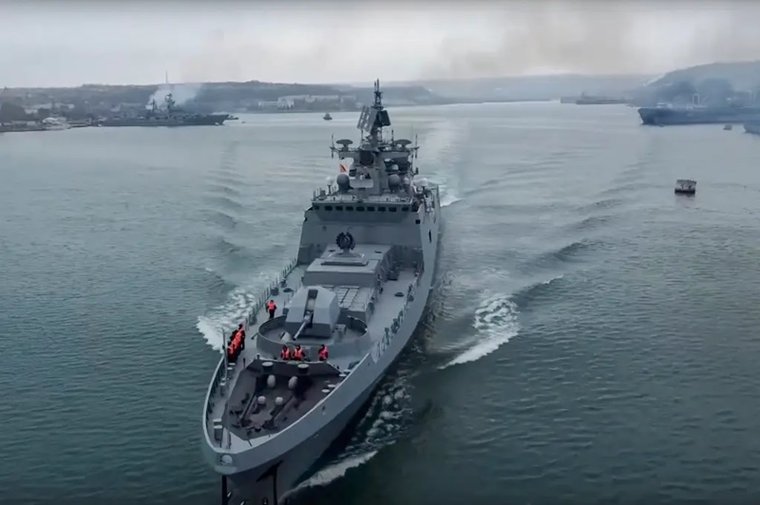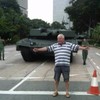Entire Black Sea “a contested maritime area” says Commander of Estonian Navy
Details
More Products & Services
Products & Services
Military Unmanned Systems Handbook
Shephard Media
The Military Unmanned Systems Handbook (Digital Download) is an international guide to the military UV industry and provides detailed information on air, ground and sea (surface & sub-sea) vehicles as well as subsystems. What's included: Unencrypted 390+ page PDF of equipment and supplier information Market summary
Shephard Plus Update
Shephard Media
Shephard Plus is updating in June 2018 with rich new capabilities, and is now one of the most cost-effective and valuable aerospace and defence market intell...
Defence Insight
Shephard Media
Some of the things people like you use Defence Insight for:
- Total addressable market sizing ($)
- Competitor analysis
- Cost analysis
- Market forecasting
- Growth identification
- Increasing closing ratio
- Increasing closing order value
- Estimating product potential
- Calculating sales forecasting
- Supply and demand analysis
- Total addressable market sizing ($)
- Competitor analysis
- Cost analysis
- Market forecasting
- Growth identification
- Increasing closing ratio
- Increasing closing order value
- Estimating product potential
- Calculating sales forecasting
- Supply and demand analysis
Description
Commodore Ivo Värk, Commander of the Estonian Navy, has said that the entire Black Sea is currently a contested naval area, with neither Russia nor Ukraine able to claim dominance in the conventional sense of naval warfare.
Speaking to Russian newspaper Pravda, frequently a voice of government spin, Commodore Värk said that assets and territory in the Black Sea were frequently changing hands.
“Today, both sides effectively have a certain degree of freedom of action. This freedom of action is, of course, greater near the coastline, where both sides have their own air defence systems, naval mines and support from various shore-based weapon systems,” Värk explained.
Related Articles
Russia signs agreement for Black Sea naval base
In the wake of the Ukrainian Army downing a Russian helicopter using an uncrewed surface vessel in the Black Sea, Commodore Värk acknowledged the effectiveness with which Ukraine had taken to using such assets, but warned against inflating their significance.
“Ground-based attack drones have indeed become an important tool for Ukraine, but their image and, perhaps, their usefulness may be somewhat overestimated in the public eye," he added. “Ukraine itself says that it is using USVs precisely because it lacks other means.”
Of 17 large Russian warships, he noted, Ukrainian uncrewed vehicles had managed to damage only six.
“Speaking of drones in general, drone technologies and counter-drone measures at sea are also developing at an incredible pace. However, many experts also believe that drone technologies are more likely to serve as an additional measure, that is, complementary to conventional tools and capabilities of naval warfare.”
A rise in the use of uncrewed vehicles, particularly small ones, to defeat legacy defence networks has been a hallmark of the Ukrainian defence of its country so far.
Speaking to Russian newspaper Pravda, frequently a voice of government spin, Commodore Värk said that assets and territory in the Black Sea were frequently changing hands.
“Today, both sides effectively have a certain degree of freedom of action. This freedom of action is, of course, greater near the coastline, where both sides have their own air defence systems, naval mines and support from various shore-based weapon systems,” Värk explained.
Related Articles
Russia signs agreement for Black Sea naval base
In the wake of the Ukrainian Army downing a Russian helicopter using an uncrewed surface vessel in the Black Sea, Commodore Värk acknowledged the effectiveness with which Ukraine had taken to using such assets, but warned against inflating their significance.
“Ground-based attack drones have indeed become an important tool for Ukraine, but their image and, perhaps, their usefulness may be somewhat overestimated in the public eye," he added. “Ukraine itself says that it is using USVs precisely because it lacks other means.”
Of 17 large Russian warships, he noted, Ukrainian uncrewed vehicles had managed to damage only six.
“Speaking of drones in general, drone technologies and counter-drone measures at sea are also developing at an incredible pace. However, many experts also believe that drone technologies are more likely to serve as an additional measure, that is, complementary to conventional tools and capabilities of naval warfare.”
A rise in the use of uncrewed vehicles, particularly small ones, to defeat legacy defence networks has been a hallmark of the Ukrainian defence of its country so far.

Share
Recent Chats
Share via email
Future: handle WhatsApp here
Future: handle LinkedIn here
Future: handle Twitter here
SUBMENU HERE
Share via Chat
Copy Link



